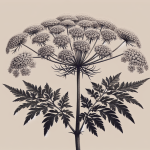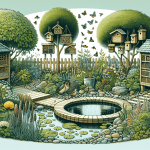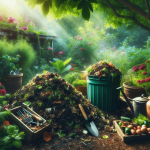This post may contain affiliate links. As an Amazon Associate, we may earn commissions from qualifying purchases.
Are you a passionate gardener looking for natural ways to prevent and control plant diseases? If so, you’ve come to the right place. In this article, we will explore alternative methods and techniques to keep your plants healthy and thriving, without the use of harmful chemicals. From cultural practices to organic treatments, we’ve got you covered. So, let’s dive into the world of eco-friendly gardening and discover how to protect your precious plants in a natural and sustainable way.
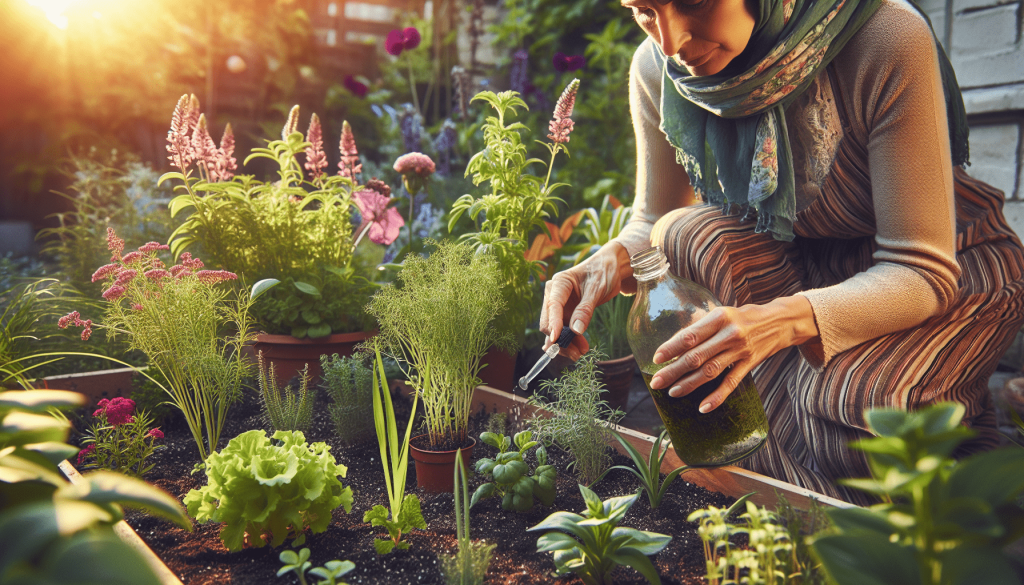
Cultural Practices
Crop Rotation
Crop rotation is a fundamental cultural practice in maintaining a healthy garden. By alternating the planting of different crops in different areas of your garden each growing season, you can minimize the buildup of soil diseases and pests. This practice helps break the life cycles of harmful organisms, reducing the risk of crop damage. By rotating crops, you can also optimize nutrient availability in the soil, enhancing overall plant health and productivity.
Planting Healthy Seeds
Planting healthy seeds is key to ensuring the success of your plants and preventing diseases. Begin by selecting high-quality seeds from reputable suppliers or saving your own seeds from disease-free plants. Before sowing, inspect the seeds for any signs of disease or damage, and remove any that are questionable. Additionally, using certified organic seeds can provide added assurance that they have been produced without the use of chemicals that may affect the health of your plants.
Sanitation Practices
Maintaining good sanitation practices in your garden is crucial for preventing the spread and recurrence of plant diseases. Start by keeping your garden free from weeds, as they can harbor pests and diseases. Regularly remove any infected or diseased plant material, such as leaves, stems, or fruits, and dispose of them properly to prevent further contamination. It is also essential to clean your gardening tools, such as pruners and shears, with a solution of bleach or rubbing alcohol to disinfect them before using them on healthy plants.
Biological Controls
Beneficial Insects
Harness the power of nature’s own pest control by attracting and encouraging beneficial insects into your garden. Ladybugs, lacewings, and praying mantises are just a few examples of predatory insects that feed on aphids, mites, and other common garden pests. You can attract these beneficial insects by planting native flowering plants, providing them with a source of nectar and pollen, and avoiding the use of chemical pesticides that could harm them.
Predatory Nematodes
Predatory nematodes are microscopic organisms that can help combat soil-dwelling pests, such as root-knot nematodes and fungus gnat larvae. These beneficial nematodes can be applied to the soil, where they seek out and attack the larvae of harmful pests, providing natural and effective control. They can be purchased from garden supply stores and applied according to the instructions on the packaging.
Microbial Inoculants
Microbial inoculants, such as beneficial bacteria and fungi, can also play a significant role in preventing plant diseases and promoting overall plant health. These beneficial microorganisms can colonize the plant’s root system, creating symbiotic relationships that enhance nutrient uptake, improve soil structure, and protect against disease-causing organisms. Adding microbial inoculants to the soil or applying them as a foliar spray can help establish a healthy microbial community and strengthen your plants’ natural defenses.
Physical Barriers
Row Covers
Row covers are a simple yet effective physical barrier that can protect your plants from pests and diseases. These lightweight, breathable fabrics can be laid directly over your plants, creating a barrier that prevents insects, such as aphids and cabbage loopers, from reaching your crops. Row covers also provide some protection against extreme weather conditions and can help retain moisture in the soil.
Netting
Netting is another physical barrier that can be used to safeguard your plants from birds, rabbits, and other animals that may feast on your harvest. Choose a netting material with small mesh openings to prevent pests from penetrating through. Netting can be draped over plants or secured around the garden perimeter to create a protective enclosure. Remember to regularly inspect the netting for any tears or gaps and repair them promptly.
Fences
Installing fences around your garden can offer a more permanent physical barrier against larger pests, such as deer and rabbits. Choose a sturdy fencing material that can withstand environmental conditions and adequately enclose your garden area. Regularly inspect the fence for any gaps or damage and repair them as needed to ensure maximum effectiveness in keeping pests out.
Organic Fungicides
Neem Oil
Neem oil is a natural and organic fungicide derived from the neem tree. With its antifungal properties, neem oil can effectively control a wide range of plant diseases, such as powdery mildew, black spot, and rust. It works by inhibiting the growth and reproduction of fungal pathogens, preventing them from spreading and causing further damage to your plants. Neem oil can be mixed with water and sprayed onto the affected plants, following the instructions on the product label.
Copper Fungicides
Copper fungicides have long been used in organic gardening as a reliable method of disease control. These fungicides contain copper compounds that act as a protective barrier, preventing fungal spores from germinating and infecting your plants. Copper fungicides are particularly effective against diseases such as blight, downy mildew, and leaf spots. It is important to follow the application instructions carefully, as excessive use can lead to copper accumulation in the soil.
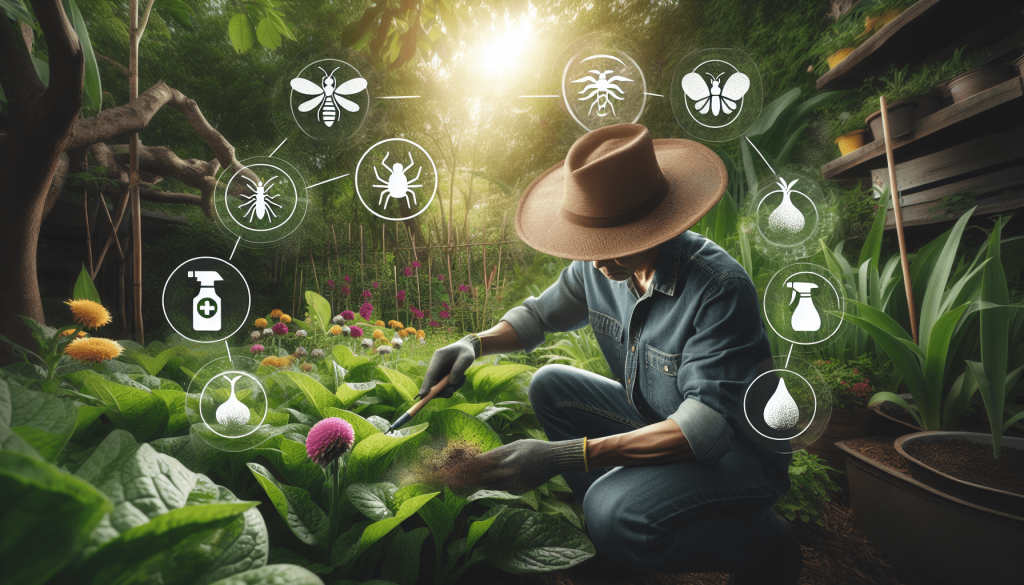
Pruning and Trimming
Proper Pruning Techniques
Pruning is a vital practice for maintaining healthy plants and preventing the spread of diseases. By removing dead or diseased branches, you can prevent the further spread of infections and encourage the plant’s energy to be directed towards healthy growth. Proper pruning techniques involve making clean cuts just above a bud or lateral branch, using sharp and sterilized pruning tools to minimize the risk of introducing pathogens to the plant.
Removing Infected Plant Parts
When dealing with plant diseases, it is essential to promptly remove and dispose of any infected plant parts. This includes leaves, stems, flowers, or fruits showing signs of disease, such as discoloration, lesions, or rot. By removing these infected plant parts, you can prevent the disease from spreading to other healthy plants nearby. Be sure to clean your tools thoroughly after pruning or removing infected material to avoid cross-contamination.
Soil Management
Proper Drainage
Good soil drainage is crucial for maintaining healthy plants and preventing waterlogged conditions that can lead to root rot and other diseases. Ensure that your garden beds have sufficient drainage by amending heavy clay soils with organic matter, such as compost or well-rotted manure. Avoid overwatering your plants and consider installing drainage systems, such as raised beds or trenches, if necessary.
Amending Soil with Compost
amending your soil with compost is an excellent way to improve its structure, nutrient content, and overall health. Compost adds organic matter to the soil, enhancing its ability to retain moisture, support beneficial microbial activity, and supply essential nutrients to your plants. Regularly incorporating compost into your garden beds not only improves plant resistance to diseases but also promotes vigorous growth and increases soil fertility.
Crop Resistant Varieties
Selecting Disease-Resistant Plant Varieties
One of the most effective ways to prevent plant diseases is by choosing plant varieties that are naturally resistant or tolerant to common diseases in your area. When selecting seeds or transplants, look for those labeled as disease-resistant or with a known history of resistance to specific diseases. Planting disease-resistant varieties can significantly reduce the risk of infection and minimize the need for chemical interventions.
Monitoring and Early Detection
Regular Inspections
Regularly inspecting your plants is crucial for monitoring their health and detecting any signs of disease at an early stage. Take the time to observe your plants closely, checking for any unusual leaf spots, wilting, discoloration, or abnormal growth patterns. By identifying and addressing potential issues early on, you can take corrective measures promptly and prevent the disease from spreading further.
Observing Signs of Disease
In addition to regular inspections, it is essential to familiarize yourself with the common signs and symptoms of diseases that affect your plants. Different diseases may manifest as leaf spots, moldy growth, yellowing, wilting, or stunted growth. By becoming acquainted with these signs, you can quickly recognize and differentiate between various diseases, making informed decisions on the appropriate course of action to prevent further damage.
Proper Watering
Watering at the Base
Proper watering techniques can significantly reduce the risk of waterborne diseases and promote healthier plant growth. To avoid wetting the foliage unnecessarily, water your plants at the base, directly into the soil or root zone. This helps prevent the spread of fungal spores and reduces the humidity that can lead to diseases such as leaf blight or powdery mildew. Mulching around the base of your plants can also help retain moisture in the soil and minimize water evaporation.
Avoiding Overwatering
Overwatering is a common mistake that can lead to root rot and other water-related diseases. It is important to provide your plants with adequate moisture, but also to allow the soil to dry out slightly between waterings. Monitor the moisture levels in the soil by inserting your finger or a moisture meter into the soil. If the soil feels excessively wet, allow it to dry out before watering again. Keeping a consistent watering schedule and adjusting it based on weather conditions can help prevent overwatering.
Natural Sprays and Remedies
Garlic Spray
Garlic has natural antimicrobial properties that make it an effective ingredient for homemade plant sprays. To make garlic spray, crush several garlic cloves and steep them in hot water for a few hours. Strain the mixture, dilute it with water, and spray it onto your plants. Garlic spray can help control fungal diseases, deter pests, and boost overall plant health. Remember to test the spray on a small area of the plant first to ensure it does not cause any adverse effects.
Baking Soda Solution
Baking soda is another natural remedy that can be used to control fungal diseases on plants. Mix a tablespoon of baking soda with a gallon of water and add a few drops of liquid soap as a surfactant. This solution can be sprayed onto affected plants, helping to prevent the spread of diseases like powdery mildew and black spot. It is important to note that baking soda can be phytotoxic to certain plants, so it is advisable to test it on a small area and monitor for any negative effects.
By incorporating these preventative and control measures into your gardening routine, you can effectively manage plant diseases without relying on chemical treatments. Embracing these natural and organic practices not only promotes a healthy garden ecosystem but also provides you with the satisfaction and peace of mind that your plants are thriving in a sustainable and environmentally friendly manner. Happy gardening!

